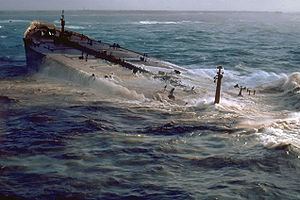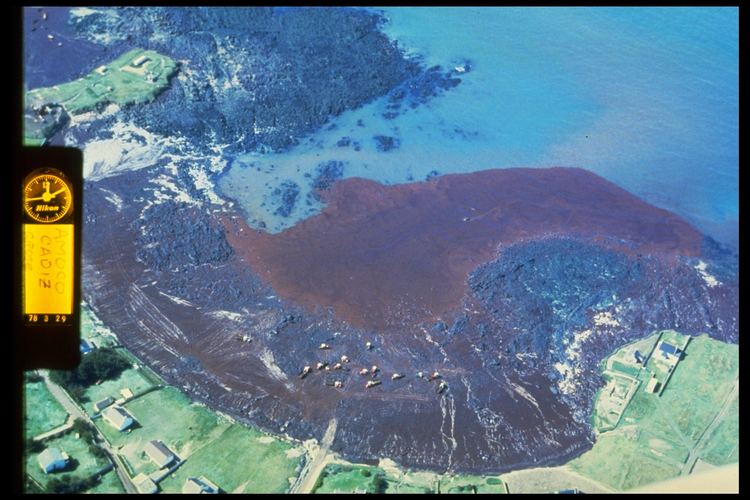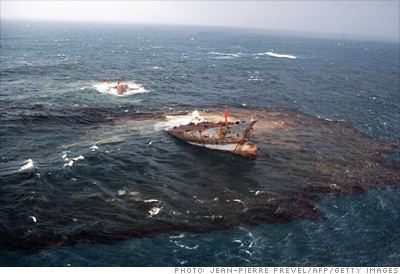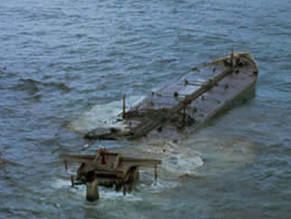Name Amoco Cadiz Laid down 24 November 1973 Construction started 24 November 1973 Length 334 m Draft 20 m | Owner Amoco Transport Co. Yard number 95 Completed May 1975 Launched 1974 Weight 233,700 tons Place built Cádiz, Spain | |
Builder Astilleros Españoles, S.A. | ||
Amoco cadiz oil spill
Amoco Cadiz was a very large crude carrier (VLCC) under the Liberian flag of convenience owned by Amoco. On 16 March 1978, she ran aground on Portsall Rocks, 5 km (3 mi) from the coast of Brittany, France; and ultimately split in three and sank, resulting in the largest oil spill of its kind in history to that date.
Contents
Synd 29 3 78 oil tanker amoco cadiz depth charged
Oil spill

On 16 March 1978 in a southwesterly gale, the Amoco Cadiz passed Ushant at the western tip of Brittany, headed for Lyme Bay in the United Kingdom. At 9:46 am when the supertanker was north of Ushant and 16 nautical miles (30 km; 18 mi) west of Portsall she turned to avoid another ship and her rudder jammed, full over to port. The captain shut down the engine and attempted to make repairs, but it was not successful. Meanwhile, the wind began blowing from the northwest, driving the ship toward the coast. By the time the tugboat Pacific successfully attached a hawser, it was 2:00 pm and the Amoco Cadiz had drifted 6 nautical miles (11 km; 6.9 mi) closer to the shore. For two hours, the tugboat struggled to slow the vessel's drift, but then the towline parted. The captain of the Amoco Cadiz turned his engines on full astern and this helped slow the ship's drift. At 7:00 pm, the captain shut down the engines so that the Pacific could try to attach another hawser. The supertanker dropped one anchor, but the flukes broke off. At this point the supertanker was drifting at 2 knots (3.7 km/h; 2.3 mph) toward the Portsall Rocks. A new towline was successfully attached at 8:55 pm but the Amoco Cadiz hit a rock soon afterward and began to leak. At 9:30 pm near the Corn-Carhai lighthouse, a rock ripped a hole in the ship and flooded the engine room.

Amoco Cadiz contained 1,604,500 barrels (219,797 tons) of light crude oil from Ras Tanura, Saudi Arabia and Kharg Island, Iran. Severe weather resulted in the complete breakup of the ship before any oil could be pumped out of the wreck, resulting in her entire cargo of crude oil (belonging to Shell) and 4,000 tons of fuel oil being spilled into the sea.


